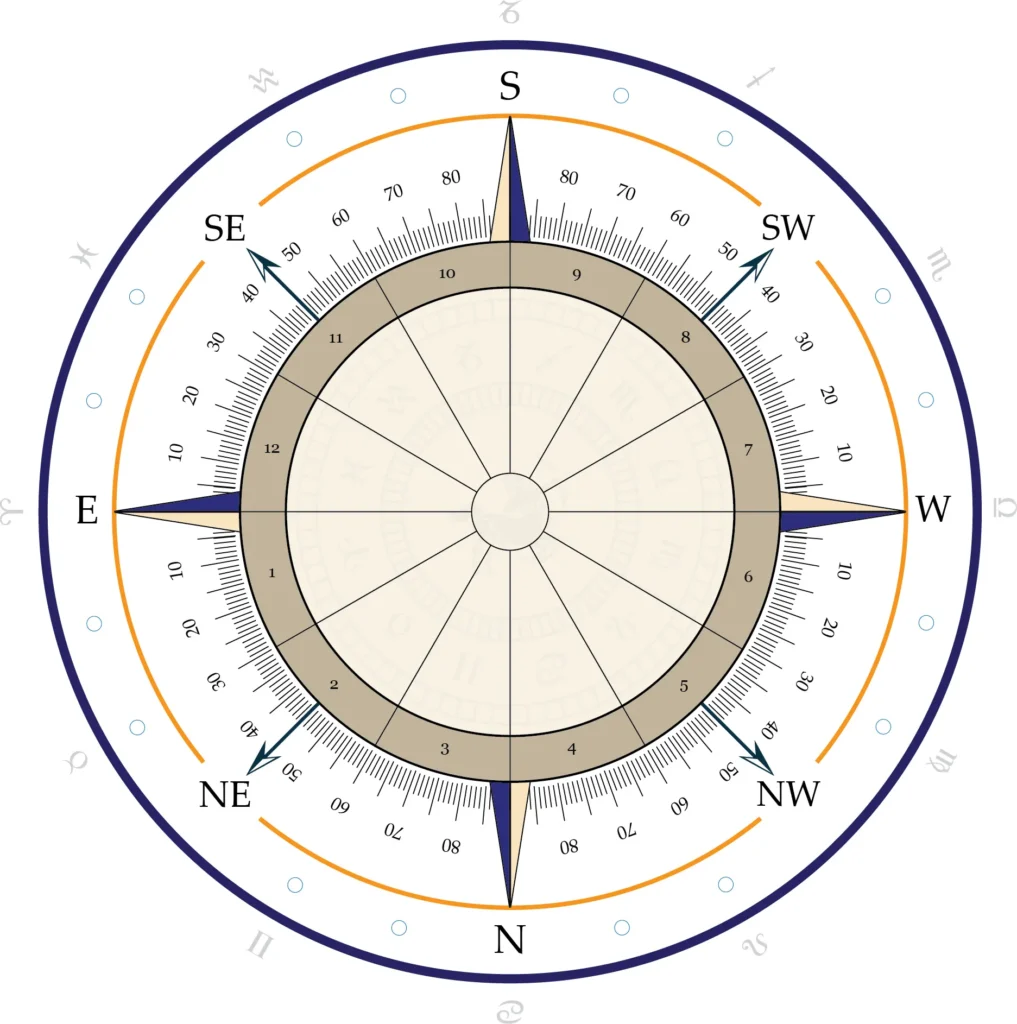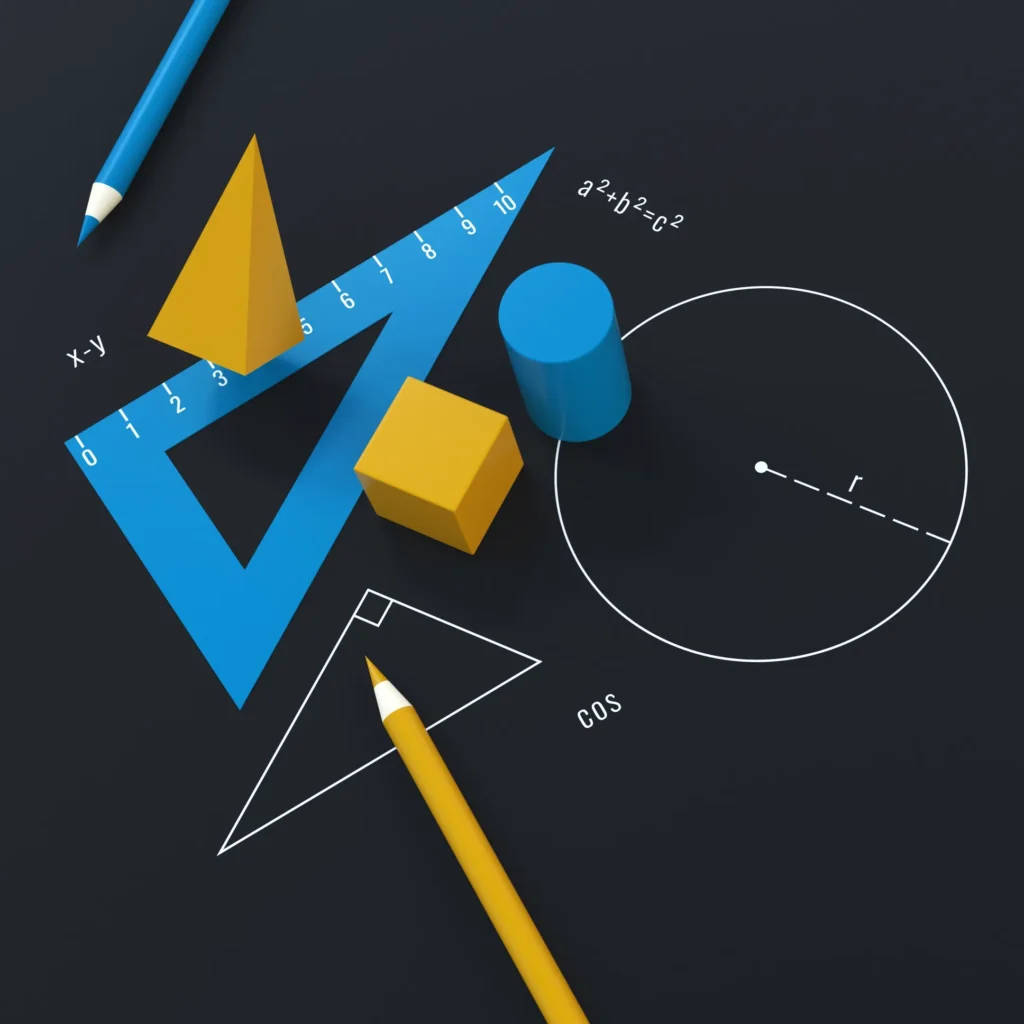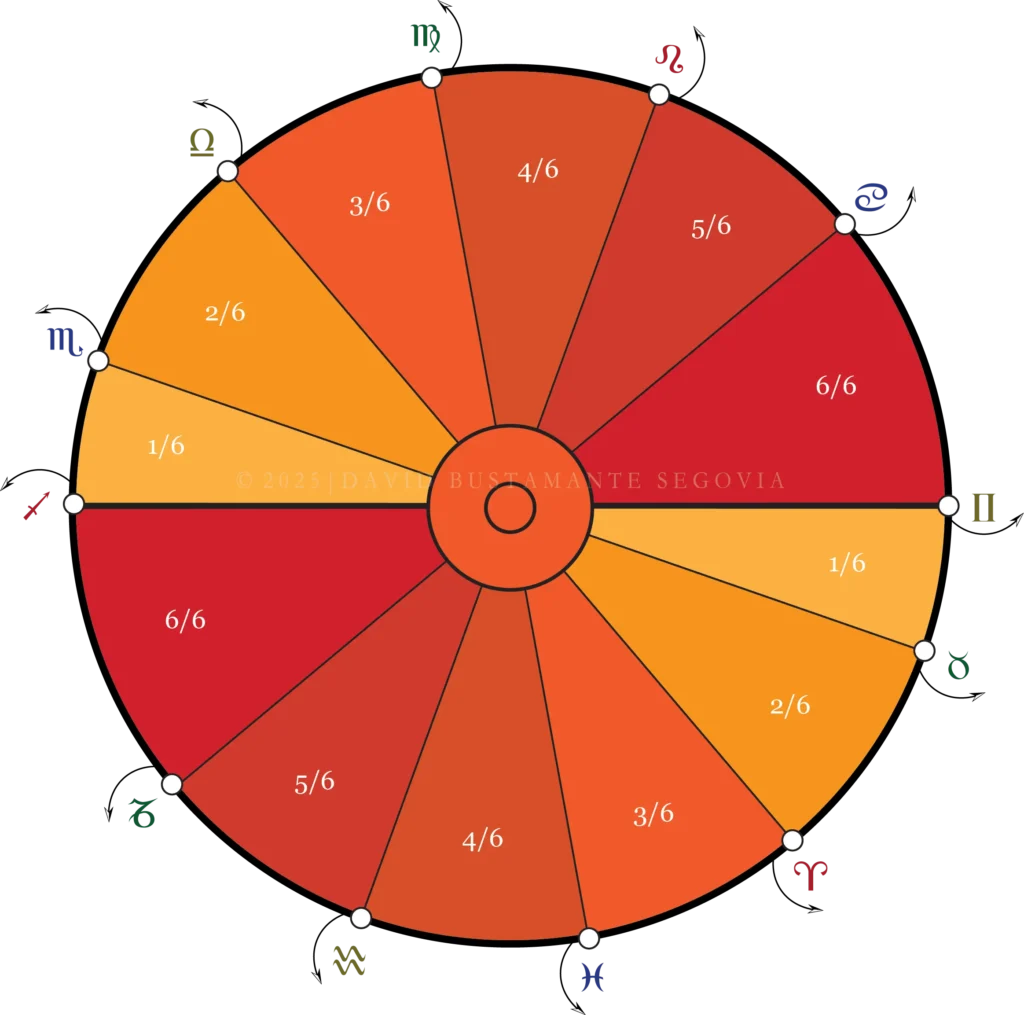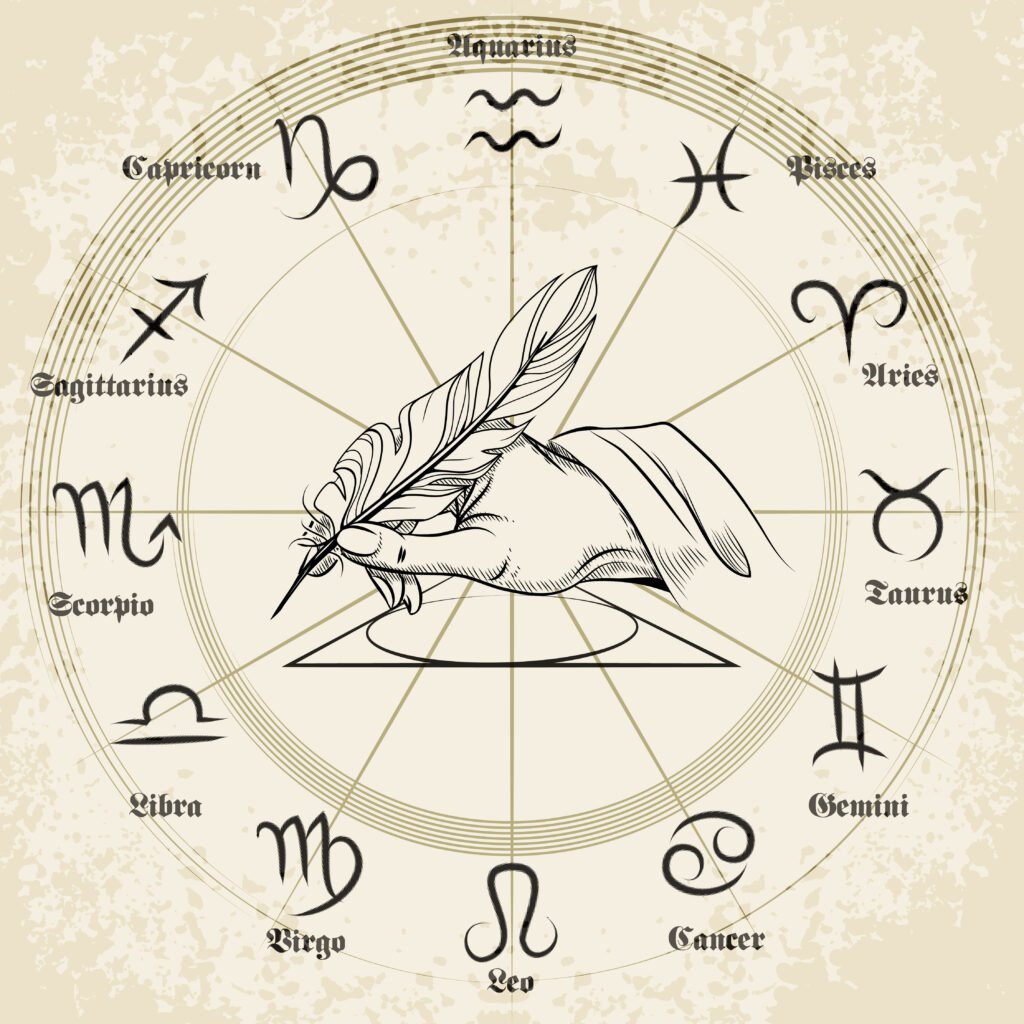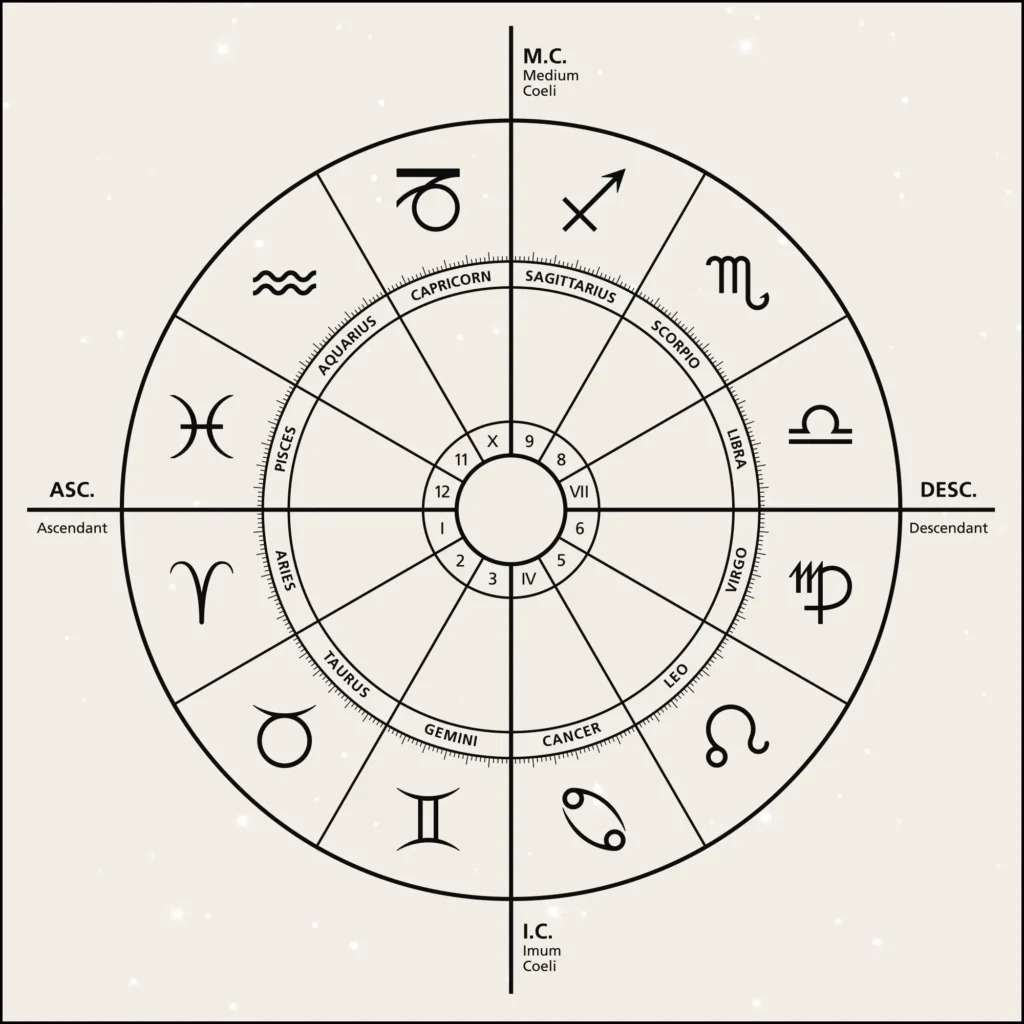
My Thoughts on the Two Major Chart Models: Quadrant and non Quadrant
A) Introduction. In general, we distinguish between (a) a large house system known as “quadrant” or “quadrantist”, from which different calculations or subsystems of quadrant houses (Regiomontanus, Koch, Placidus, Polich-Page) are derived, and (b) a nonquadrant system characterised by the—Hellenistic—model now in vogue regarded as or called: “whole signs”. In this model we use the twelve Zodiac signs or segments of our ecliptic as houses (let the term «house» be understood as the division of the space relative to the Earth’s surface in accordance with time). In a whole-sign model, house and sign are not distinguished as they are so in a quadrant one, as in the latter we use two astrographic planes, one relative to the sky (Zodiac or ecliptic), one relative to the Earth (time zones, in case we use the quadrant calculation we know as Placidus, compatible or consistent with Einstein’s theory of relativity because of its profound spatiotemporal basis or orientation).
B) Distinction. What is the fundamental or main distinction between a quadrant and a nonquadrant house system? A quadrant system refers to the use or recognition of a plane other than or distinct from the ecliptic or Zodiac and, consequently, establishes which geometric mathematics regards as great circles. These two great circles (one that goes from east to west or left to right, and another that crosses over our head and under our feet, north to south, or vice versa), divides the sphere in four separate portions or slices from which then follows the need to distinguish the intermediate slices (i.e. houses) within them, that is, those “trapped” or “captured” between each of the four peaks or angles of the chart so that we may determine their ecliptic degrees as well (i.e. the degree of the ecliptic intersecting these spatiotemporal segments).
Although a whole-sign chart would recognise the exact degree of the ASC and the MC, these DO NOT constitute house cusps, as any planet above the horizon may continue to be considered lodged in the 1st House (if placed or occupying the ascending or rising sign) as well as any planet below the horizon may continue to be considered lodged in the 7th House (if placed or occupying the setting sign). The exact degree of all twelve regions relative to that location on Earth wherein one is born are to be distinguished in order to determine the specific area of influence of all planets in the chart, that is, areas or regions beyond the four angles, especially if the event for which the chart was drawn took place far from the Earth’s equator.
This is why we could speak of a system that prescinds from houses or that focuses on simplifying (or oversimplifying) the chart as much as possible (especially if you lack a software and most born are so near the equator, as it was the case in ancient times).
C) Implication. Because the most astronomically accurate quadrant system to date is based on time zones, it makes it possible to distinguish one chart or astrography from another every four minutes on average (all house cusps, not just the ASC and MC, will shed their ecliptic degree every four minutes, which means that the margin of influence or power of a planet over a specific house or region of the natal chart can increase or decrease from one chart to another in only four minutes), or every ten minutes if we were to take the duodenaries into consideration (better known as per its original term in Greek: dodecatemoria).
D) Incompatibility. If we were to prescind from a system of quadrant houses (not necessarily Placidus, but any of the last developed) and use, instead, the Zodiac signs as astronomical houses, all chart or astrography will remain the same for two hours on average (sometimes more, sometimes less, depending on the latitude), as each sign takes approximately two hours to rise over the horizon. This, then, at least from an astrographical point of view, does not allow for sufficient and/or meaningful distinctions between all charts produced or drawable within that margin to be made and makes the system or model very imprecise or otherwise incompatible with genetic facts about the human being and other events, not just birth.
E) Explanatory power. If astrology, especially natal astrology, claims to hold any explanatory power of the human being and/or the world in which we live, why would it use a tool or calculation incompatible with or falsifiable of reality, that is, that ignores or fails to acknowledge or recognize facts, namely both the uniqueness of each human and the existence of Time Zones (especially when, unlike in ancient times, the mortality rate of all born has improved considerably).
F) Ancient versus modern context. We understand the respect that those who consider themselves “Hellenistic traditionalists” have for the ancient wisdom. However, just as we recognize the error of a genius as great as Aristotle regarding the theory of the atom (while still honouring his work on ethics and logic) thanks to the tools of measurement and observation of matter in the present, we must recognize the error of the ancients in dispensing with a more rigorous domification (French) system due to the insufficiency of the measurement and observation tools of the time to accurately calculate houses according to time (only in understanding Einstein’s theory of relativity would we understand the importance of this), or even the need to do so. That is, even assuming that they had the tools to distinguish intermediate cusps based on a spatio-temporal calculation, why bother when, unlike today, (i) not so many are born every two hours every day of the year (ii) near the equator and much less far from it (where house cusps become more important), (iii) greatly dilating the time it takes to manually draw a celestial chart thereby in the absence of a software?
G) Conclusion. This is the reason why I consider the use of signs as houses an exercise contrary to both experience and reason (i.e. absurd). I also think that anyone who seeks to explain with a reasonable degree of accuracy the reality of an event on Earth must use two planes, the ecliptic (or Zodiac), and the houses (according to its astronomical, not figurative definition), as only this can fully reflect the reality of the matter or subject under investigation. After all, neither the human being nor any other species on Earth has only a body or only a spirit, but both body and spirit. While the Zodiac or ecliptic represents the soul or our essence, the houses or regions represent the body or matter (incarnation of an entity). It is the encounter between heaven and Earth or the intersection of both planes that describes our life conditions on planet Earth (i.e. each planet has its own ecliptic and its own number of houses based on both the speed of its rotational axis and the degree of its axial tilt simultaneously).

